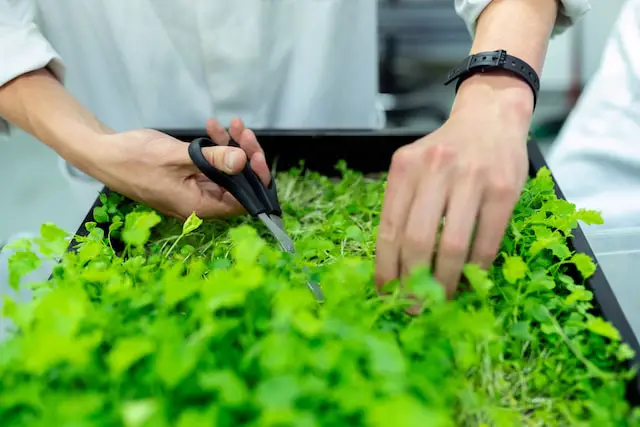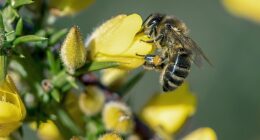Botany is the study of plant life and includes all aspects of plants, from their evolution and classification to their structure and function. Plant science, on the other hand, is a more applied field that focuses on how we can use plants to improve our lives, whether it be through developing new crops or finding ways to use plants for environmental cleanup.
What is botany?
(Photo by vadim kaipov on Unsplash )

Botany is the scientific study of plants, encompassing their structure, growth, development, classification, and interactions with the environment. It involves exploring various aspects of plant life, including their anatomy, physiology, genetics, ecology, evolution, and economic importance. Botanists investigate plant species diversity, plant tissues and cells, reproduction mechanisms, plant diseases, and the impact of environmental factors on plant growth. They employ various techniques such as microscopy, molecular biology, and fieldwork to understand plant processes and phenomena. Botany plays a crucial role in agriculture, conservation, medicine, pharmacology, and environmental sciences, contributing to our understanding of plant life and its significance to ecosystems and human societies.
What is plant science?
(Photo by Sarah Brown on Unsplash )

Plant science, also known as plant biology or phytology, is a multidisciplinary field that focuses on the scientific study of plants. It encompasses various aspects of plant life, including their structure, function, growth, development, metabolism, genetics, and interactions with the environment.
Plant scientists investigate different aspects of plants, such as their anatomy, physiology, biochemistry, molecular biology, genetics, and ecology. They explore how plants obtain nutrients, photosynthesize, reproduce, respond to stimuli, and adapt to various environmental conditions. Additionally, plant scientists study plant diseases, pests, and the impact of human activities on plant health and ecosystems.
Plant science utilizes a range of techniques and approaches, including laboratory experiments, fieldwork, genetic analysis, imaging technologies, and computational modeling. Researchers in this field aim to enhance our understanding of plant processes, discover new plant species, develop sustainable agricultural practices, improve crop yield and quality, and address global challenges such as food security and environmental sustainability.
Plant science is an essential discipline that contributes to advancements in agriculture, horticulture, forestry, pharmaceuticals, biofuels, environmental conservation, and biotechnology. It plays a crucial role in promoting plant-based innovations, sustainable resource management, and the conservation of plant biodiversity for the benefit of human society and the planet.
Botany Vs. Plant science – Key differences
While Botany and Plant Science share a common focus on the study of plants, there are subtle differences between the two disciplines.
Scope: Botany traditionally refers to the scientific study of plants, encompassing their classification, structure, physiology, and ecology. Plant science, on the other hand, is a broader term that includes various sub-disciplines such as plant genetics, molecular biology, biotechnology, and plant pathology.
Interdisciplinary Nature: Plant science is often considered more interdisciplinary, incorporating knowledge and techniques from fields such as genetics, biochemistry, molecular biology, and biotechnology. Botany, while also drawing from other disciplines, tends to have a more holistic approach and is deeply rooted in plant taxonomy and morphology.
Emphasis: Botany places emphasis on the identification, classification, and description of plant species, as well as the study of their evolutionary relationships and ecological interactions. Plant science, on the other hand, focuses on understanding plant processes at the molecular, cellular, and genetic levels, and may involve applications in agriculture, biotechnology, and plant breeding.
Technological Advancements: Plant science often incorporates advanced technologies, such as genetic engineering, genomics, and high-throughput screening, to study and manipulate plant traits. Botany, while embracing technological advancements, may have a stronger foundation in classical plant taxonomy and field-based research.
Practical Applications: Plant science has a more applied orientation, aiming to address practical challenges in agriculture, crop improvement, plant breeding, and biotechnology. Botany, although also contributing to these areas, may have a stronger emphasis on ecological and environmental studies.
While there is overlap between Botany and Plant Science, the latter is often seen as a more modern and multidisciplinary approach to the study of plants, incorporating diverse fields of research and applications, while Botany retains its traditional focus on plant identification, classification, and ecological relationships.
What is the plant biotechnology?
Plant biotechnology refers to the application of scientific and technological methods to manipulate and improve plants for various purposes. It involves the use of techniques from genetics, molecular biology, and other disciplines to study and modify plant traits, including their growth, development, physiology, and genetic makeup. Plant biotechnology aims to enhance crop productivity, increase nutritional value, improve resistance to diseases and pests, and develop plants with desirable traits.
Some common techniques used in plant biotechnology include:
Genetic engineering: This involves the transfer of genes from one organism to another to introduce specific traits or characteristics. Genes can be transferred between different plant species or even between plants and other organisms. Genetic engineering allows for the introduction of traits such as herbicide resistance, insect resistance, disease resistance, and improved nutritional content.
Tissue culture: Tissue culture involves the growth of plant cells, tissues, or organs in a controlled laboratory environment. This technique allows for the production of large numbers of identical plants through a process called micropropagation. Tissue culture is also used for the regeneration of whole plants from small plant parts, such as shoot tips or callus tissue.
Molecular markers and marker-assisted selection: Molecular markers are specific DNA sequences that can be used to identify and track genes or traits of interest in plants. Marker-assisted selection (MAS) involves using these markers to select plants with desired traits in breeding programs. MAS helps to speed up the breeding process by allowing breeders to identify and select plants with desired traits more efficiently.
Genomic and transcriptomic analysis: Genomic and transcriptomic analyses involve studying the complete set of genes (genome) or the patterns of gene expression (transcriptome) in plants. These techniques provide valuable insights into plant genetics, gene function, and regulatory mechanisms. They help in identifying genes responsible for specific traits and understanding how plants respond to different environmental conditions.
The field of plant biotechnology has diverse applications, including crop improvement, pharmaceutical production, biofuel production, and environmental remediation. It plays a crucial role in addressing global challenges such as food security, climate change, and sustainable agriculture by developing crops with increased yield, improved nutritional content, and enhanced resistance to biotic and abiotic stresses.
Featured Image By – ThisisEngineering RAEng on Unsplash








